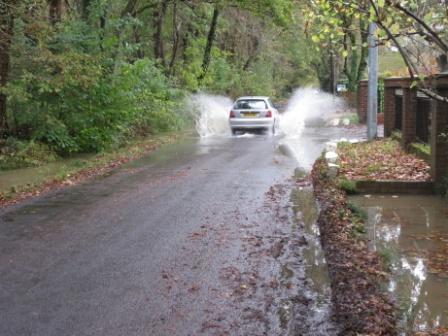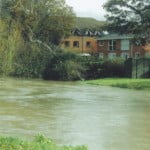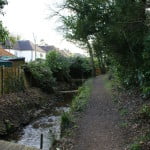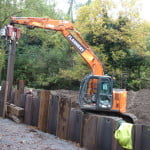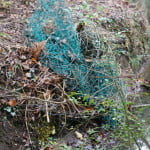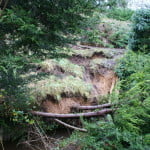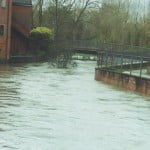What to do before, during and after a flood
Through reports and pictures in the media the disastrous effects of flooding on homes and services are all too apparent. Although Farnham has not suffered in this way for many years, abnormal weather conditions could mean it happens again. It is therefore sensible for residents who may be at risk to make sure they are not caught by surprise, and to do all they can to protect themselves and their property. The Environment Agency advises an approach that plans possible actions to be taken before, during and after flooding. There is also a hard copy leaflet entitled “What to do before, during and after a flood.” Some of the key points for those at risk to consider are replicated in the following summary.
Actions to take in advance of flooding
The first step is to understand the risks relevant to your particular location.
There are three main types of flooding
| Surface water |
This occurs when drains and ditches are overwhelmed by very heavy rain and water forms large pools and puddles on the surface. These can overflow into properties or block roads but are generally short lived.
|
|
| River | This occurs where the volume of water in a steam or river is too great and bursts over or through the banks. | |
|
Ground water |
This occurs when the underlying ground becomes so saturated that water wells up to the surface and can enter homes from beneath. |
|
Examples of all these types of flooding occurred in Farnham or further down the river Wey in the winter of 2013-14. Householders are advised to familiarise themselves with the drainage systems in the area where they live and the history of any previous flooding. The Environment Agency’s Flood Maps show the possible extent of river flooding. Those living close to the river Wey can monitor the water level If the result of your evaluation is that you are at serious risk of flooding there are some things to do without delay. These include:
| Checking your insurance cover | |
| Apply to receive Environment Agency Flood Alerts and Warnings | |
| Considering protection of your property by use of proprietary products on the market. |
The National Flood Forum’s Blue Pages directory is a useful independent directory of flood protection products from specialist manufacturers. When buying equipment, customers are advised to make sure items are Kite Marked.
Draw up a Personal Flood Plan and keep it in a readily accessible place.
Your personal flood plan
The main items to be covered are:
| Knowing who to contact in an emergency, and how | |
| List what possessions could be moved away from possible harm as soon as a flood warning is given | |
| List what you would need to move when flooding occurs | |
| Ensuring you know how to turn off your mains services | |
| Preparing a flood kit of essential items to keep handy |
Actions during a flood
This is the time to implement your personal flood plan, concentrating on the safety of you and your family. The essential actions are:
| Turn off mains supplies before the flood waters enter your property | |
| Protect what you can, for example by moving people, pets and important documents upstairs | |
| Cooperate with the Emergency Services and evacuate your property if told to do so | |
| Remember that flood waters are dangerous both because of their power to knock over people or move heavy objects such as cars, and because of contamination. | |
| In these emergency conditions there are plans in place in Waverley Borough Council and the Emergency Services to help you but remember that everyone involved is likely to be stretched at such times and things may not happen as quickly as you would like. | |
| If necessary give assistance to neighbours especially if elderly or disabled. |
After a flood
In recovering from a flood, care must be taken because there may be hidden dangers in the water such as sharp objects, raised manhole covers and pollution from sewage. You should therefore wear waterproof clothing, Wellington boots and a face mask. Water may need to be swept or pumped out of the property and silt shovelled out. Cleaning and disinfecting can be carried out using ordinary household products. Central heating systems can be used for drying the property but need to be checked out by an engineer before use. Making an Insurance Claim Once a claim is lodged the insurance company will normally send a loss adjuster to confirm what repairs are needed and covered by you policy. You should check with the company when this will happen and whether you are to clean your property or will they get someone to do it for you. Additionally you should:
| Make your own record of all flood damage possibly illustrated with video or photographs | |
| Make a note of all telephone calls and retain all letters, e-mails and receipts | |
| Do not throw anything away until told (except ruined food) |
Further steps to take While recovering from flooding you may wish to consider making your property more resilient against future occurrences. Such measures can be discussed with the loss adjuster and may include:
| Laying ceramic tiles on the ground floor instead of using carpets | |
| Raising the height of electrical sockets | |
| Fitting stainless steel kitchen units | |
| Raising the height of the boiler or putting it upstairs | |
| Fitting non-return valves on all drains and water inlet pipes |
Useful links
The National Flood Forum – the national charity dedicated to supporting and representing communities and individuals at risk of flooding.
Property protection products from the Property Care Association
Surrey’s Local Resilience Fourum based on the Surrey Community Risk Register
Report on flooding on Farnham winter 2014/15
- Gostrey flooding image
- Row of houses at the Bourne
- EA work 2013 diverting the course of The Bourne Stream
- Poorly maintained embankment 2
- Poorly maintained embankment
- River Wey by Maltings flooded


